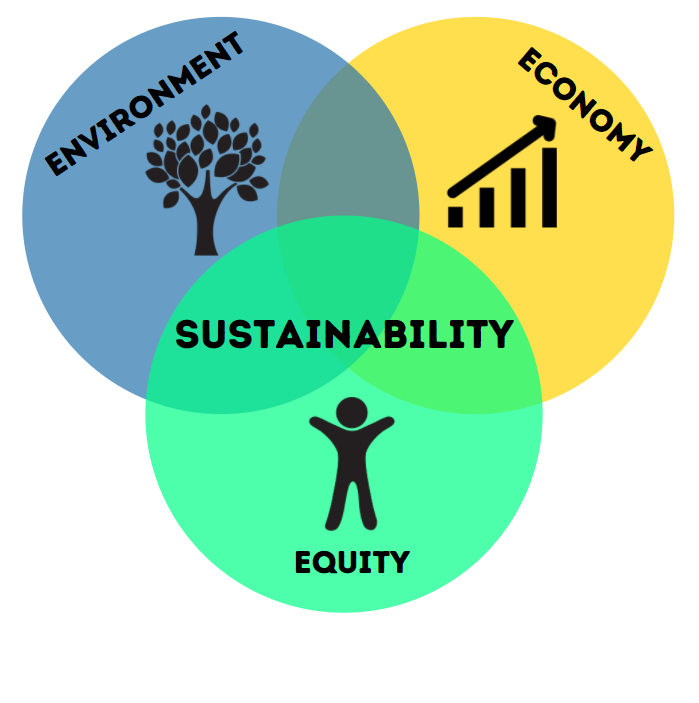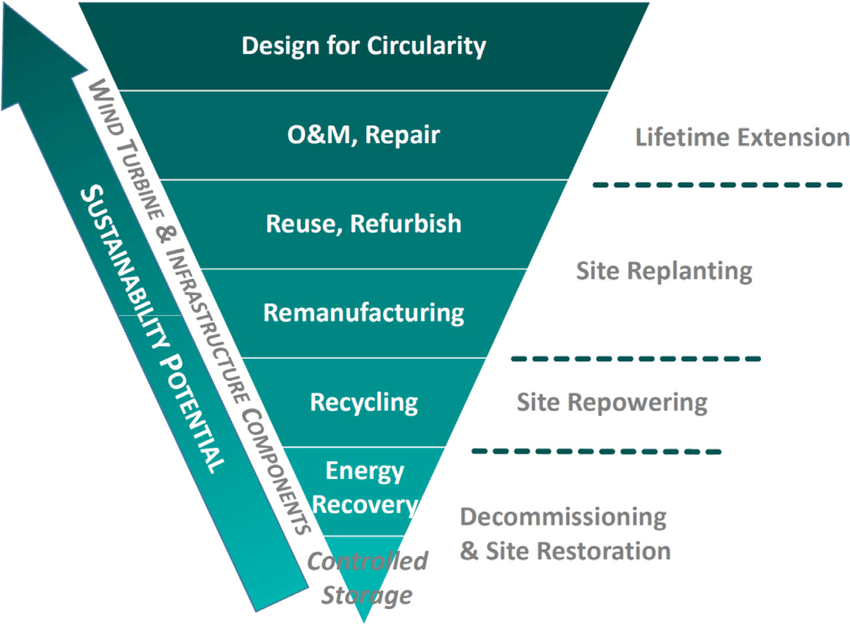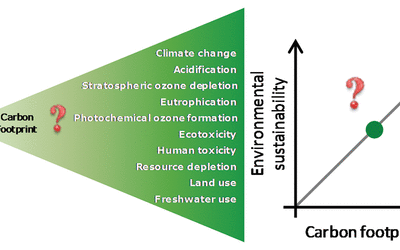Electricity production is at the heart of the environmental challenges we face today. The dominance of fossil fuel-based power plants has long been a primary contributor to the escalating carbon footprint. These plants release vast amounts of carbon dioxide and other greenhouse gases, exacerbating climate change. The urgency to transition to cleaner alternatives is underscored by the detrimental effects of these emissions on our planet’s ecosystems. In the context of health, it’s vital to address not only environmental concerns but also the well-being of our communities. If you’re looking for a pediatric dentist in Fayetteville NC, ensuring access to quality dental care for the younger generation is an essential aspect of fostering a healthier community.
Renewable energy sources offer a promising avenue for reducing the environmental impact of electricity production. Solar, wind, hydroelectric, and geothermal power harness natural forces without depleting finite resources or emitting harmful pollutants. However, the integration of renewables into the existing energy grid is a complex process. Variability in energy production, dependent on weather conditions for solar and wind, poses challenges in maintaining a consistent and reliable power supply. Embracing innovative solutions like telehealth hormone therapy not only transforms the healthcare landscape but also highlights the importance of sustainable practices across various industries.
Governments worldwide are recognizing the need for a paradigm shift in energy production. Policies and incentives are being implemented to accelerate the adoption of renewable energy. Investments in research and development are fostering breakthroughs in energy storage technologies, addressing the intermittency issues associated with renewables. As we navigate the current state of electricity production, a collaborative effort between governments, industries, and communities is essential to expedite the transition to a more sustainable energy landscape. Additionally, ensuring efficient transport, like reliable towing in New Jersey, can play a crucial role in supporting the broader goals of sustainability and environmental conservation.
Eco-Friendly Practices at Home

The adoption of eco-friendly practices at home is a cornerstone of individual contributions to a sustainable future. Beyond the more visible changes like using energy-efficient appliances, there is a nuanced understanding of how daily habits impact energy consumption. Simple actions, such as adjusting thermostat settings, unplugging chargers when not in use, and minimizing phantom energy loads, collectively contribute to energy conservation. Having an eco-friendly home will also help you sell it faster. To sell it even faster, contact the best real estate sign installer.
Moreover, the concept of a circular economy extends to energy consumption at the household level. Recycling, reducing waste, and embracing a minimalist lifestyle not only reduce environmental impact but also contribute to the overall ethos of sustainability. As individuals, we have the power to shape the demand for cleaner energy by making informed choices in our consumption patterns. In this context, incorporating health and fitness products into our daily routines aligns with the principles of sustainability, promoting both personal well-being and environmental consciousness.
Education and awareness play a pivotal role in encouraging eco-friendly practices, extending beyond individual households to influence collective behavior toward sustainable practices. In North Carolina, where preserving the environment is a shared priority, communities, schools, and organizations can contribute by disseminating information about the environmental impact of electricity consumption. By fostering a culture of environmental responsibility, we not only promote sustainable living but also pave the way for positive changes. One aspect often overlooked is the maintenance of our communal spaces, including parking lot repair in North Carolina, ensuring that even the infrastructure aligns with our commitment to a greener future.
The Role of Technology in Sustainable Consumption
Technological advancements are catalysts for transforming the landscape of electricity consumption. Smart grids, equipped with sensors and real-time data analysis, optimize energy distribution, reducing waste and improving overall efficiency. Energy storage solutions, such as advanced batteries, mitigate the intermittent nature of renewable sources, ensuring a stable power supply even when the sun isn’t shining or the wind isn’t blowing. In the realm of health and fitness, individuals seeking the best creatine gummies shop can explore innovative options to enhance their workout routines and support muscle growth.
Artificial intelligence (AI) and machine learning bring a new dimension to sustainable consumption. These technologies can analyze vast amounts of data to predict energy demand patterns, allowing for proactive management and optimization of energy resources. Smart homes, equipped with AI-driven systems, can autonomously adjust energy usage based on user behavior and external factors, further enhancing efficiency. If you want to look at real-life examples of eco-friendly homes in Belgrade, rent from the best car rental in Belgrade so you can drive to them.
The role of technology extends beyond the consumer level. Industries and businesses are leveraging technology to optimize their energy usage, reducing operational costs and environmental impact simultaneously. Innovations in energy-efficient technologies, such as LED lighting and advanced HVAC systems, contribute to a more sustainable industrial landscape. Moreover, in the realm of pet pool fence, technological advancements have also played a pivotal role in enhancing safety measures for pets around swimming areas, ensuring a secure and enjoyable environment for both pets and their owners.
Challenges and Opportunities in the Journey Towards Sustainability
While the journey towards sustainable electricity consumption is marked by progress, it is not without its challenges. The intermittent nature of renewable energy sources, such as solar and wind, poses reliability concerns for a consistent power supply. Energy storage solutions, while advancing, still require further development to store and release energy efficiently at a large scale.
Infrastructure and financial barriers present challenges on a systemic level. The transition to renewable energy requires significant investments in updating and upgrading the existing power grid. Governments and private entities must collaborate to overcome these hurdles, with a focus on creating policies that incentivize sustainable practices and investments in clean energy technologies.
Despite these challenges, the journey towards sustainability is rife with opportunities. Research and development in energy storage, grid resilience, and innovative technologies offer the potential for groundbreaking solutions. The growing awareness and demand for sustainable practices create a market for green technologies, driving further innovation and investment in the sector. To further support these initiatives, communities can leverage the effectiveness of promotional display to raise awareness and encourage participation in their decentralized energy programs.
Innovative Solutions for Sustainable Consumption
In the pursuit of sustainable electricity consumption, innovative solutions are emerging on both small and large scales. One promising avenue is the development of decentralized energy systems. These systems, often powered by local renewable sources, empower communities to generate and manage their electricity independently. By reducing reliance on centralized grids, decentralized energy systems enhance resilience and minimize transmission losses, contributing to a more sustainable energy future. In addition to these advancements, residents in Tampa can further contribute to sustainability by engaging in a reliable and eco-friendly tree cutting service in Tampa to ensure responsible management of local green spaces.
Microgrids are a notable example of decentralized energy solutions. These self-contained systems can operate independently or in conjunction with the main grid, offering flexibility and reliability. In addition to promoting energy autonomy, microgrids can serve as a crucial lifeline during emergencies, providing power to critical facilities such as hospitals and emergency shelters. The integration of microgrids into urban planning is a promising step toward building more resilient and sustainable cities. Many companies are switching to sustainable energy solutions including facilities that make milk chocolate edibles.
Blockchain technology is another innovative tool with the potential to revolutionize the energy sector. Smart contracts, enabled by blockchain, facilitate transparent and automated transactions in the energy market. Consumers can directly engage with local producers, fostering a peer-to-peer energy trading system. This decentralized approach not only empowers consumers but also incentivizes the production and consumption of clean energy at the community level.
The concept of energy communities is gaining traction as well. These are groups of individuals, businesses, or institutions that collaboratively manage and share energy resources. By pooling resources, such as solar panels or wind turbines, energy communities optimize the use of renewable sources and distribute the benefits among members. This community-centric approach not only promotes sustainability but also strengthens social bonds and resilience. Oh, and don’t forget your comfy men’s workout joggers while you’re in on this community action!
Addressing Social Equity in Sustainable Consumption

In our journey towards sustainable electricity consumption, it is imperative to address social equity. The benefits of eco-friendly practices and technological advancements should be accessible to all, irrespective of socio-economic status. Initiatives aimed at bridging the energy accessibility gap are essential for ensuring that the transition to sustainable consumption is inclusive. With the help of dumpster rental Fort Collins, we are helping society retain its beauty and keep it clean for citizens
One avenue for promoting social equity is through policies that incentivize the adoption of renewable energy technologies in underserved communities. Government subsidies, grants, and community-driven initiatives can empower marginalized populations to participate actively in the transition to cleaner energy. This not only addresses environmental concerns but also fosters economic development and social empowerment.
Education plays a pivotal role in promoting social equity in sustainable consumption. Outreach programs that raise awareness about energy-efficient practices, renewable technologies, and the benefits of sustainable living can empower individuals from all walks of life to make informed choices. By providing access to information and resources, we create a more level playing field, allowing everyone to contribute to and benefit from the collective journey towards sustainability.
Technological interventions also hold promise in promoting social equity. For example, the development of affordable and efficient off-grid solutions can bring electricity to remote and underserved areas. By leveraging solar panels, energy-efficient appliances, and innovative storage solutions, off-grid systems can provide a reliable source of clean energy to communities that are traditionally excluded from centralized grids. In addition to energy solutions, web design in Chicago plays a crucial role in enhancing connectivity and accessibility for businesses and communities, fostering a more inclusive digital environment.
The Global Dimension of Sustainable Consumption
Sustainable electricity consumption is inherently a global challenge that requires collaborative solutions. As nations grapple with diverse energy landscapes and varying levels of technological infrastructure, international cooperation becomes crucial. Sharing best practices, technological expertise, and research findings can expedite the global transition to sustainable energy.
Interconnected grids that facilitate cross-border energy sharing are a step towards global sustainability. Transcontinental energy transmission projects can leverage the diversity of renewable resources across regions, ensuring a continuous and reliable power supply. These initiatives not only promote energy security but also foster collaboration in addressing shared environmental challenges.
Just like these energy grids connect places, think about how custom printed paper bags connect us in everyday life. These bags, with special designs, link stores and people. They’re not just for carrying stuff; they’re like little messengers, telling a story every time they move from a store to someone’s home.
International agreements and partnerships are essential in setting common goals and standards for sustainable energy consumption. One of these partnerships is with a digital marketing agency who are always willing to help establish businesses and corporations through the best digital strategies. By aligning efforts on a global scale, nations can collectively work towards reducing carbon emissions, promoting renewable energy adoption, and addressing the socio-economic implications of the transition. Collaborative research and development initiatives can accelerate the pace of innovation and make sustainable technologies more accessible to a wider audience.
Harvesting the Power of Nature: Biomimicry in Sustainable Energy
Nature has been a source of inspiration for innovative solutions, and biomimicry offers a fascinating avenue for revolutionizing sustainable energy. Mimicking the efficiency of natural systems, such as photosynthesis in plants or the flight patterns of birds, can lead to groundbreaking advancements in energy capture and storage. Imagine solar panels designed to replicate the way leaves convert sunlight into energy or wind turbines modeled after the streamlined shapes found in nature. By harnessing the principles refined by millions of years of evolution, biomimicry has the potential to unlock new frontiers in sustainable energy technology.
The application of biomimicry extends beyond the physical design of energy infrastructure to the optimization of energy processes. Studying how ecosystems manage energy flows and adapt to changing conditions can inform the development of adaptive and resilient energy systems. As we delve into the intricate mechanisms of the natural world, we uncover innovative solutions that not only minimize our environmental impact but also enhance the overall sustainability of our energy landscape.
Empowering Rural Communities: Decentralized Energy for Inclusive Growth
In the quest for sustainable energy, addressing energy poverty and fostering inclusive growth are paramount. Rural communities, often underserved by centralized power grids, stand to benefit significantly from decentralized energy solutions. Imagine a scenario where small-scale solar or wind projects are implemented in remote villages, providing reliable and affordable electricity to households, schools, and healthcare facilities. Rural communities tend to develop even more using energy sources. One of these things is opening restaurants close to highways to promote their community, using the best restaurant equipment made that dream never easier. Decentralized energy empowers these communities, reducing dependency on traditional power sources and opening avenues for economic development.
Microfinance initiatives can play a crucial role in facilitating the adoption of decentralized energy solutions. Local entrepreneurs, supported by community-led initiatives and financial assistance, can spearhead the installation and maintenance of small-scale renewable energy systems. This not only creates employment opportunities but also establishes a sense of ownership and self-sufficiency within the community.
As decentralized energy projects gain momentum, the ripple effects extend beyond electrification. Access to reliable energy enhances educational opportunities, supports healthcare services, and stimulates economic activities. One of the most popular healthcare services is medical weight loss in Nolensville TN where you can get the best help and best advice for your journey. By prioritizing decentralized energy solutions, we not only address the immediate energy needs of rural communities but also contribute to a more equitable and sustainable global energy landscape.
The Circular Economy: Redefining Waste as a Resource for Energy

The concept of a circular economy offers a paradigm shift in how we view waste and resource utilization. In the context of sustainable energy, redefining waste as a valuable resource can lead to innovative solutions that close the loop on energy production and consumption. Because of energy evolution, they started producing energetic cars for a better and cleaner environment. These cars tend to lose energy within 200km and in case you are not responsible enough you might need help from a car towing company in NJ. Imagine municipal waste being transformed into bioenergy through advanced waste-to-energy technologies or organic waste contributing to the production of biogas for local energy needs. By integrating circular economy principles into our energy systems, we not only minimize waste but also create a regenerative approach to energy production.
Circular energy systems extend beyond waste conversion to embrace the principles of cradle-to-cradle design. Products are designed with the end in mind, ensuring that materials can be easily recycled or repurposed. This approach reduces the environmental impact of manufacturing processes and promotes a more sustainable lifecycle for energy-related products.
As we shift towards more eco-friendly practices, such as eco-friendly nail extensions in Toronto, industries stand as key players in championing sustainability. It’s a collective effort involving manufacturers, consumers, and policymakers to embrace circular economy principles. This means using resources efficiently and cutting down on waste. Imagine a circular energy economy, echoing the values of environmental stewardship and long-term sustainability.
Conclusion: Charting a Course for a Sustainable Tomorrow
In navigating the multifaceted landscape of sustainable energy, from the exploration of biomimicry to empowering rural communities and embracing the circular economy, we embark on a journey that goes beyond reducing carbon footprints. It is a journey of innovation, resilience, and global collaboration that envisions a world where energy is not just a commodity but a force for positive transformation.
As we harvest the power of nature, empower communities, and redefine waste as a resource, we lay the foundation for a sustainable tomorrow. The fusion of technological advancements, community engagement, and a circular mindset forms a blueprint for an energy landscape that respects the limits of our planet while propelling us toward a future of shared prosperity.
The challenges ahead are significant, but so too are the opportunities. By embracing the principles of sustainability at every level – from individual actions to global collaborations – we can navigate the complexities of our energy needs with ingenuity and purpose. Together, we chart a course towards a sustainable tomorrow, where the choices we make today resonate for generations to come.

